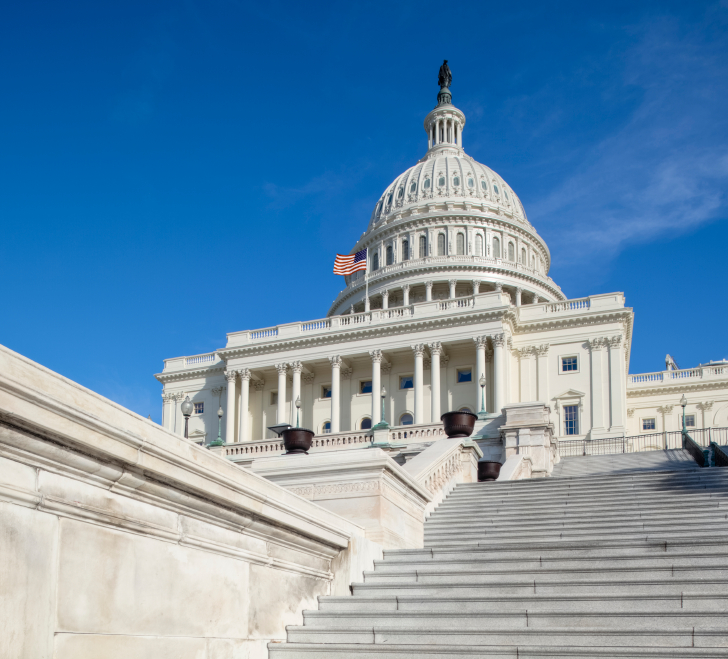As a second Trump administration approaches, we’re running out of time to confirm as many federal judges as possible to provide a check on his presidential power and curb his stated policy priorities.
Help More Domestic Violence Survivors Survive by Strengthening Housing Assistance

 The intersection of domestic violence, homelessness, and housing is multi-layered and complex. Domestic violence often forces survivors and their families into homelessness, as they struggle to find permanent housing after leaving their abuser. Unstable housing makes safety and recovery from trauma and abuse more difficult for survivors and their children. In fact, domestic violence is a leading cause of homelessness among women, as those who have experienced domestic violence are four times more likely to face housing instability than those who have not. One in four women cite domestic violence as a major contributor to their homelessness. And of homeless women with children, 80% have experienced domestic violence.
The intersection of domestic violence, homelessness, and housing is multi-layered and complex. Domestic violence often forces survivors and their families into homelessness, as they struggle to find permanent housing after leaving their abuser. Unstable housing makes safety and recovery from trauma and abuse more difficult for survivors and their children. In fact, domestic violence is a leading cause of homelessness among women, as those who have experienced domestic violence are four times more likely to face housing instability than those who have not. One in four women cite domestic violence as a major contributor to their homelessness. And of homeless women with children, 80% have experienced domestic violence.
“Access to housing assistance is critical for DV survivors. Without it, they often struggle to both afford a place to live and with finding landlords willing to rent to them.” — Voices from the Domestic Violence Field
The need for safe housing and the economic means to maintain stable housing are two of the most pressing concerns among survivors escaping a violent and controlling partner. Housing risks and barriers are even more heightened for Native Americans, people of color, those who identify as LGBTQ, runaway youth, people with disabilities, immigrants, and those living in rural areas, due to higher rates of violence, language access, food insecurity, unemployment, economic vulnerability, how people search for housing, discrimination, and more.
As advocates working to end domestic violence learn more about these intersections, the need for an array of safe and accessible housing for survivors becomes even more urgent. Every day, tens of thousands of DV survivors and their children live in emergency shelters or transitional housing, but these emergency and short-term housing programs across the country also turn thousands away due to chronic underfunding and simple lack of availability. While emergency shelter, transitional housing, and housing subsidies are essential safety nets for families fleeing domestic violence, there must be a fundamental understanding that preventing homelessness and providing safe housing are critical to ensuring survivor safety.
Research and practice point to several key solutions: adequately supported safe housing options should include emergency shelter, transitional housing, rapid rehousing, innovative DV housing first models, flexible funding options to help survivors avoid homelessness, and permanent supportive housing—with full and equal access to each of these. One study found that long-term housing subsidies reduce intimate partner violence more than transitional housing or rapid re-housing. In a recent survey conducted by the National Resource Center on Domestic Violence (NRCDV), 82% of the domestic violence and sexual assault advocates and service providers who responded indicated that housing assistance consistently helps the survivor clients they serve.
Housing subsidies certainly help many survivors access affordable housing, but availability and longevity is still limited. Without significant investment in housing assistance and the collective investment to increase the availability of safe and affordable housing in every community, survivors and their families will have to continue to face homelessness and constant insecurity as they navigate the hurdles of the housing system or private market.
“The lack of adequate institutional support in the form of social services and public housing…is another level of violence experienced by battered women, which occur in ways that are racialized as well as gendered and classed.” – Natalie Sokoloff and Ida Dupont
Instead of cutting housing assistance, Congress should increase funding for housing subsidies and reduce wait lists by providing both innovative and stable housing that meets the unique needs of survivor. By strengthening all benefits at the federal and state levels and providing additional resources and supports for survivors, individuals, families, and communities will be able to gain economic security.





